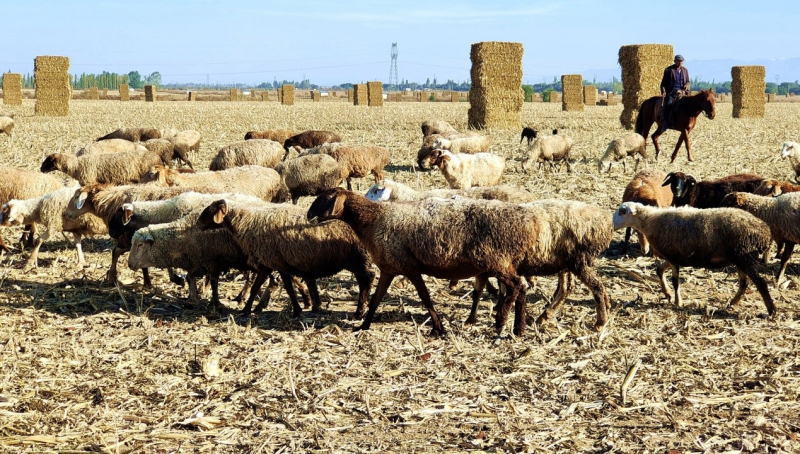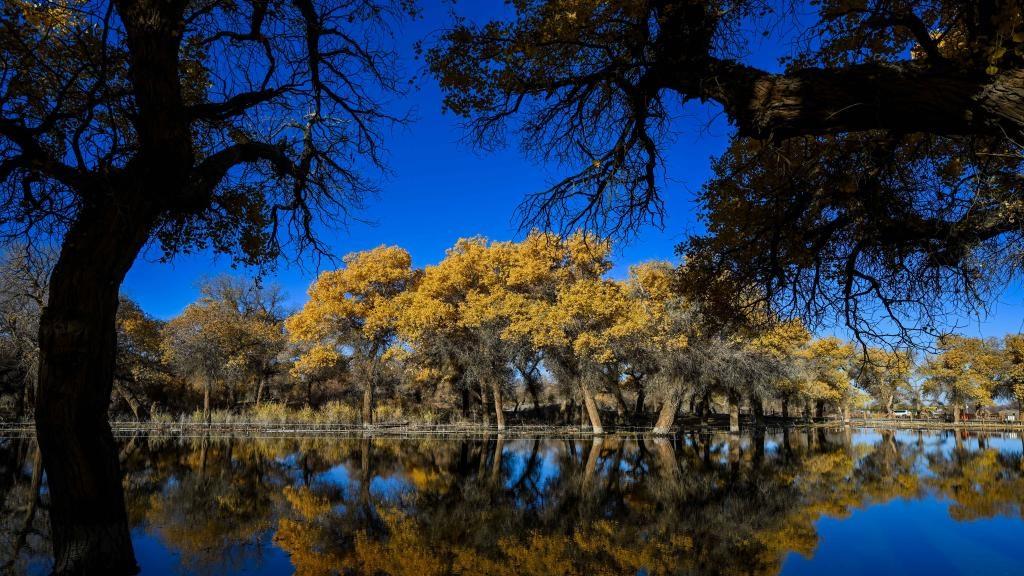Unique ecological cycle in NW China's Xinjiang provides feed for livestock

On Oct. 21, 2024, herds of sheep enjoy their "tasty food" in fields of corn stalks in Qapqal Xibe Autonomous County, Ili Kazak Autonomous Prefecture of northwest China's Xinjiang Uygur Autonomous Region. (Photo/Hua Yanming)
As autumn deepens, in Qapqal Xibe Autonomous County, Ili Kazak Autonomous Prefecture of northwest China’s Xinjiang Uygur Autonomous Region, about 1 million mu (67,000 hectares) of corn is harvested. Since early October, herds of cattle, sheep and horses have flocked to the corn straw fields after the autumn harvest, turning the straw land into a "grassland" for livestock.
The county, combining agriculture with animal husbandry, not only has abundant autumn grain crops such as corn and rice, but also cleverly utilizes the rich straw resources after the autumn harvest season, providing advantageous conditions for the development of animal husbandry.
"My family possesses 43 cows, 260 sheep and 25 horses. Every year after the autumn harvest, livestock are grazed in the corn fields until winter comes. It saves the winter forage for livestock and reduces the feeding costs," said Bahtir Gemingjiang, a local herdsman.
In Qapqal Xibe Autonomous County, it is common to see herds of cattle, sheep and horses forage freely in the corn stalks. For local farmers and herdsmen, this practice not only saves on feeding costs for livestock, but also decreases the use of fertilizer, improves the soil structure and promotes the sustainable development of agriculture through the approach of naturally transforming livestock's waste into farmyard manure. This grazing method contributes to the green development of animal husbandry and injects new vitality for local farmers and herdsmen, increasing both production and income.

On Oct. 21, 2024, after the autumn harvest, cattle, sheep and horses gaze in crop straw lands in Qapqal Xibe Autonomous County, Ili Kazak Autonomous Prefecture of northwest China's Xinjiang Uygur Autonomous Region. (Photo/Hua Yanming)

On Oct. 21, 2024, sheep graze in the corn fields after the autumn harvest in Qapqal Xibe Autonomous County, Ili Kazak Autonomous Prefecture of northwest China's Xinjiang Uygur Autonomous Region. (Photo/Hua Yanming)

On Oct. 21, 2024, cornfields transform into straw lands after the autumn harvest, which become the natural "prairies" for livestock to graze in agricultural areas in Qapqal Xibe Autonomous County, Ili Kazak Autonomous Prefecture of northwest China's Xinjiang Uygur Autonomous Region. (Photo/Hua Yanming)

On Oct. 21, 2024, herds of cattle leisurely nibble on straws in a corn field in Qapqal Xibe Autonomous County, Ili Kazak Autonomous Prefecture of northwest China's Xinjiang Uygur Autonomous Region. (Photo/Hua Yanming)
Intern Li jingyan contributed to this story.
Photos
Related Stories
- Magnificent landscape of Baisha Lake in Xinjiang
- Stunning glacier park enchants visitors in NW China's Xinjiang
- Panlong Ancient Road in NW China's Xinjiang brings prosperity to locals
- Multidisciplinary scientific expedition completed in Xinjiang
- Young drummers bring the beat to Xinjiang wedding
- Hotan in NW China's Xinjiang explores key technologies for speed breeding
- Desert county in NW China's Xinjiang succeeds in trial breeding of pearl oysters
- China's top political advisor stresses forging strong sense of community for Chinese nation
- Xinjiang's foreign trade maintains strong growth in the first nine months this year
- Delegates from Islamic body hail Xinjiang's stability, development
Copyright © 2024 People's Daily Online. All Rights Reserved.









